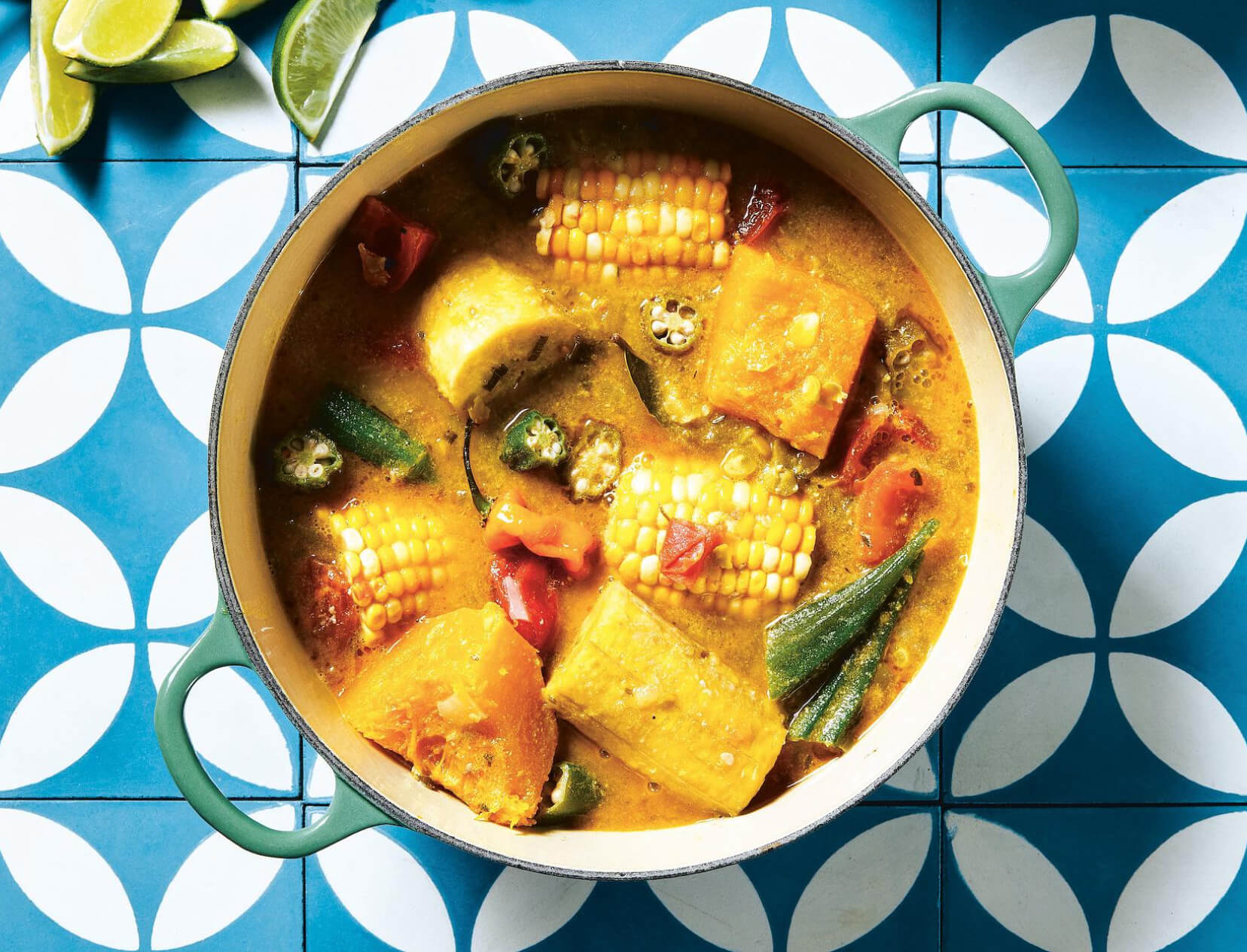[ad_1]
Redefining Healthy Eating
Written by: Maya Feller, MS, RD, CDN
|
Published on: January 24, 2023
|
Reviewed by: Denise John, PhD

Photo courtesy of Christine Han for Maya Feller
Maya Feller, MS, RD, CDN, is the author of the new goop Press cookbook Eating from Our Roots. You can see Feller in conversation with Gwyneth this Thursday, January 26—and get your own nutrition questions answered in real time.
In my nutrition practice, I have come to learn that health exists on a spectrum and healthy eating means something different for each person. But health is often defined by the Anglo-American and Anglo-European cultures, which are global minorities yet dominate and shape the trajectory of how the world thinks about food.
I’ve done countless searches for the phrase “healthy food,” and I’ve found that the top results include common fruits and vegetables, the occasional brown rice bowl, and a plate filled with nicely charred grilled meat, whole grains, and leafy greens. These images are usually followed by a list of “the top 10 healthy foods,” which include more fruits, vegetables (usually greens), and whole grains. Yes, these foods are absolutely nourishing, have wonderful health benefits, and should be a part of a pattern of eating. But they lack diversity in terms of the types of foods presented, how they are prepared (or not), and the spices and flavors used with them (or lack thereof).
Observing these search results, I find myself asking: How did these foods become the gold standard for health? What if someone doesn’t like these types of foods? What happens when the nourishing meals that a person grew up eating are not included in these searches? As a health care professional, I know that there is an abundance of healthy and nourishing foods that look and taste very different from the purported wellness gold standard. There is plenty of space at the proverbial table (and on one’s plate) for a wide variety of foods from cultures around the world. Some of these foods, often representing historically marginalized ethnic groups, are included in my book Eating from Our Roots.
In my practice, we focus on expanding the nutritional discussion to encourage the inclusion of new and familiar flavors and textures, without judgment. We remove the morality around eating and take the whole person into consideration when adjusting patterns of eating. And we applaud reinstating the kitchen as a source of joy and a place that provides nourishing, flavorful foods. As a result, my patients experience less shame and guilt when eating and have a better relationship with food and their bodies. Some principles we work from at Maya Feller Nutrition include:
Honor your food preferences. It’s best to honor your individual likes and dislikes while taking your current health into consideration. If the act of eating becomes a chore, then shopping, cooking, and eating turn into a bore. My clinical experience has taught me that when a person looks forward to a nourishing meal, especially one that they enjoy, they are more likely to replicate that experience. Ask yourself: Do you enjoy eating the food that is on your plate?
Make space for heritage foods. You are the expert in your lived experience, and it shouldn’t be any different when developing, customizing, or deepening your pattern of eating. The foods that are representative of your culture, heritage, and ethnicity should always have a place on your plate. Perhaps you grew up eating plantains and cassava but not potatoes. Or maybe your family preferred currants instead of raisins. Perhaps mung beans are more familiar to you than navy beans. There is space for the inclusion of these and many other foods that don’t make it into the gold standard of healthy eating. If you’ve removed your heritage foods from your pattern of eating, welcome them back with fervor and open arms.
Don’t forget the flavor. We often focus on infusing animal proteins with flavor, through marinades or rubs, and serve them as the center of the meal. If you do the same with vegetables, they can be just as delicious. Nonstarchy and starchy vegetables, grains, beans, nuts, and seeds are great in their unadulterated state, but when tastefully seasoned, they become absolutely incredible. A spice mix of turmeric, cumin, black pepper, and ginger can transform a roasted cruciferous vegetable side dish into the star of your plate—and potentially transport you to your favorite destination, as spices often do.
This article is for informational purposes only, even if and regardless of whether it features the advice of physicians and medical practitioners. This article is not, nor is it intended to be, a substitute for professional medical advice, diagnosis, or treatment and should never be relied upon for specific medical advice. The views expressed in this article are the views of the expert and do not necessarily represent the views of goop.
We hope you enjoy the book recommended here. Our goal is to suggest only things we love and think you might, as well. We also like transparency, so, full disclosure: We may collect a share of sales or other compensation if you purchase through the external links on this page.
[ad_2]
Source link


